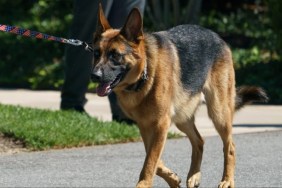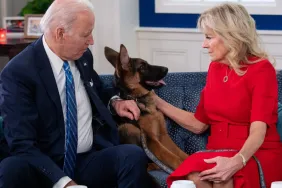Recent internal USSS documents obtained by CNN reveal incidents involving Commander Biden, President Joe Biden’s family dog. He has reportedly bitten US Secret Service personnel numerous times, totaling at least 24 documented cases. Additional incidents involving executive residence staff and other White House workers have been previously reported, underscoring the gravity of the situation.
Over 24 biting incidents on record for President Joe Biden’s dog Commander
Records obtained through a Freedom of Information Act request indicate that Commander, President Biden’s two-year-old German Shepherd, has been involved in numerous biting incidents. These cases involve uniformed Secret Service personnel and Biden’s protective detail members. In addition, this compelled Secret Service officers to modify their workplace routines to prevent additional injuries.
The incidents have occurred at the White House and Biden’s homes in Rehoboth Beach and Wilmington, Delaware. They have also taken place in Nantucket, Massachusetts, where the Bidens have spent their last two Thanksgiving holidays and at Camp David. As a result, Commander had to move out of the White House.
The half-a-dozen incidents do not encompass prior reported instances involving the Commander. Additionally, a report from last July detailed at least 10 more incidents, one of which forced a uniformed officer to seek treatment at a nearby hospital.
An unnamed assistant special agent in charge of the USSS’ Presidential Protective Division cautioned their team about the German Shepherd in a June 2023 email. They wrote, “The recent dog bites have challenged us to adjust our operational tactics when Commander is present — please give lots of room.” Furthermore, the email stressed the need for creativity in ensuring personal safety amidst the dog bite incidents.
This cautionary message came several months prior to the dog’s removal from the White House. Multiple biting incidents occurred in the intervening period.
The Biden family welcomed Commander as a puppy in December 2021, presented as a gift from Joe Biden’s brother, James. This was after the Bidens’ previous German Shepherd, Champ, passed away at the age of 13. According to an email from a Uniform Division officer, despite the initial joy inspired by his arrival, Commander displayed “extremely aggressive behavior.”
Challenges associated with White House dogs and behavioral issues
Anthony Guglielmi, the Secret Service communications chief, informed Forbes that personnel have long been adapting their approach to working in environments with family pets across multiple presidential administrations. He further stated that the incidents involving Commander were handled as workplace injuries.
According to a source close to the Bidens, the Biden family feels deeply sad and remorseful about the incidents.
Additionally, Biden’s second canine companion, Major, also has a biting history. Eventually, he also had to be relocated from the White House.
President Biden is not to blame for his dogs’ biting behavior. However, it remains the duty of the pet owner to take measures like proper training to prevent future such incidents.
Thus, immediate action is necessary from Commander’s caretakers. It is necessary to react with empathy, comprehension, and positive reinforcement. Here are some of the possible measures:
- Remove Commander from triggering situations promptly to prevent aggressive behavior from escalating.
- Limit interactions in high-stress environments like the White House, prioritizing safety for both Commander and those around him.
- Collaborate with dog experts to assess behavior.
- Utilize positive reinforcement techniques like treats and praise to reinforce good behavior.
Dealing with a biting dog can be challenging for both the pet parent and the furry friend. Firstly, educate yourself about dog behavior to understand the underlying reasons for biting, which could stem from distress, fear, or frustration.
You can also start obedience training to manage behavior and encourage socialization, which helps to build confidence and reduce aggression. Identify specific triggers and use positive reinforcement techniques to promote good behavior while discouraging negative actions. In severe cases, consider behavior modification techniques like desensitization and counter-conditioning exercises.









